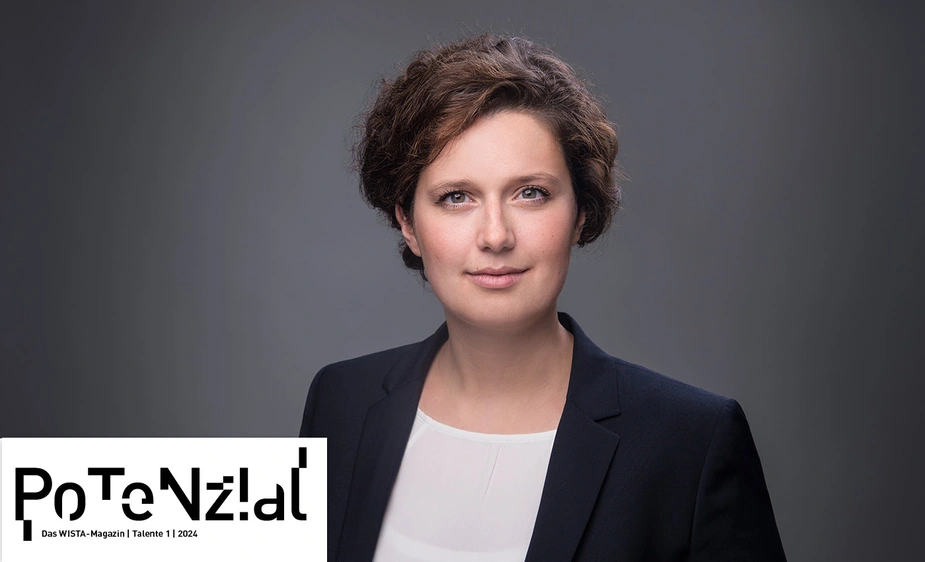AI for additive manufacturing processes
1000 Kelvin GmbH from the Charlottenburg Innovation Centre is on a growth course with its software for selective laser sintering processes
The company 1000 Kelvin GmbH from the Charlottenburg Innovation Centre (CHIC) is on a growth course. It uses artificial intelligence (AI) in additive manufacturing to optimise the quality of metal components and to reduce the amount of post-processing required. However, finding high-skilled workers to expand the team has proven to be a time-consuming challenge.
Selective laser sintering makes dreams of perfectly crafted components become true. In theory, at least. Compared to creating component parts by milling them from a metal block or punching from a sheet, when you use lasers to fuse wafer-thin metal powder layer by layer on a micrometre scale, there are no limits to what one can design. Cavities, lattice structures, moveable parts on the inside, overhangs, or varying wall thickness—anything seems possible. Those who constructively rethink their designs and consistently use opportunities for functional integration can fuse assemblies to create additive components. Assembly and storage costs are omitted, which is especially worthwhile in heavily regulated industries like aviation and medical technology if only a handful of components need to be certified instead of a dozen. Or if implants can be precisely adapted to individual physical requirements instead of having to comply with sizing systems.
Because of these advantages, the technology has been on the rise for years. However, it, too, can’t make dreams come true. What sounds easy in theory is frequently disenchanted in practical application. And so, while the range of metal alloys on offer is growing, the powders do come at a price—and many of them must be melted down using costly support structures. Selective laser sintering processes, too, are subject to the laws of gravity. The support structures not only bind material, but they also have to be painstakingly separated from the end component by hand at the end of the manufacturing process. The more intricate the design, the more frequent total losses occur during the separation phase—and the laser melting process has to start all over again. Additive manufacturing has proven to be failure-prone, not only in post-processing. The lasering process itself also has its pitfalls. Especially when the light puts too much energy into the powder in a confined space too quickly, irreparable faults in the component part are the result.
With their start-up 1000 Kelvin, Katharina Eissing, who has a PhD in physics, and Omar Fergani, who has PhD in mechanical engineering, are tackling these problems systematically. Before founding a business together, they got to know and appreciate each other at the additive manufacturing (AM) unit of Siemens AG. There and at earlier stations in the industry, they had become aware of the problems of the processes and their causes—and saw a solution in applying artificial intelligence. They have been working on this idea at CHIC since spring 2021 and are making great leaps forward. Their team is growing. Their software solution AMAIZE is on the market and enjoying strong international demand.
On the one hand, AI is the key to implementing the very computing-intensive creation of a digital print file, which is supported by modelling. The team uses dynamisation via parallel computing. To increase performance, graphics processors deliver the bulk of computing power. This is the basis for the software to precisely calculate the component creation in the powder bed. In doing so, the use of support structures can be reduced to an absolute minimum, among other things. “At the same time, our AI-based copilot can precisely identify local risks of overheating due to the use of laser power, even before the laser melting process has started,” says Eissing. Thanks to precise predictions, users of their AI-driven software platform can choose a process strategy to eliminate possible sources of error from the outset. Additionally, the software documents the ‘thermal history’ of components, even while in operation.
The market launch during the company’s third year has been smooth sailing so far. Managing growth in terms of staff has proven slightly more difficult. “Although we are always on the global lookout and use every opportunity to highlight our vacancies at trade fairs, conferences, and on social media, it takes a long time for us to find suitable skilled workers,” says Eissing. 1000 Kelvin has grown to eleven employees. It will likely grow more. Even though Berlin is an attractive business location, recruitment is difficult. The team rarely finds suitable talent in the city itself. This makes things more complicated. After all, relocating for a new job and leaving behind your entire social circle involves significant risks.
Technology companies like 1000 Kelvin are competing for professionals who can choose their careers freely. No matter how successful, a Berlin-based start-up does not hold the best cards.
Eissing is therefore calling for better training. “In terms of AI and entrepreneurship training, other research locations are in the lead,” she remarks, critically. Improvements need to be made if Berlin is to remain competitive in crucial future technology fields.
Peter Trechow for POTENZIAL
